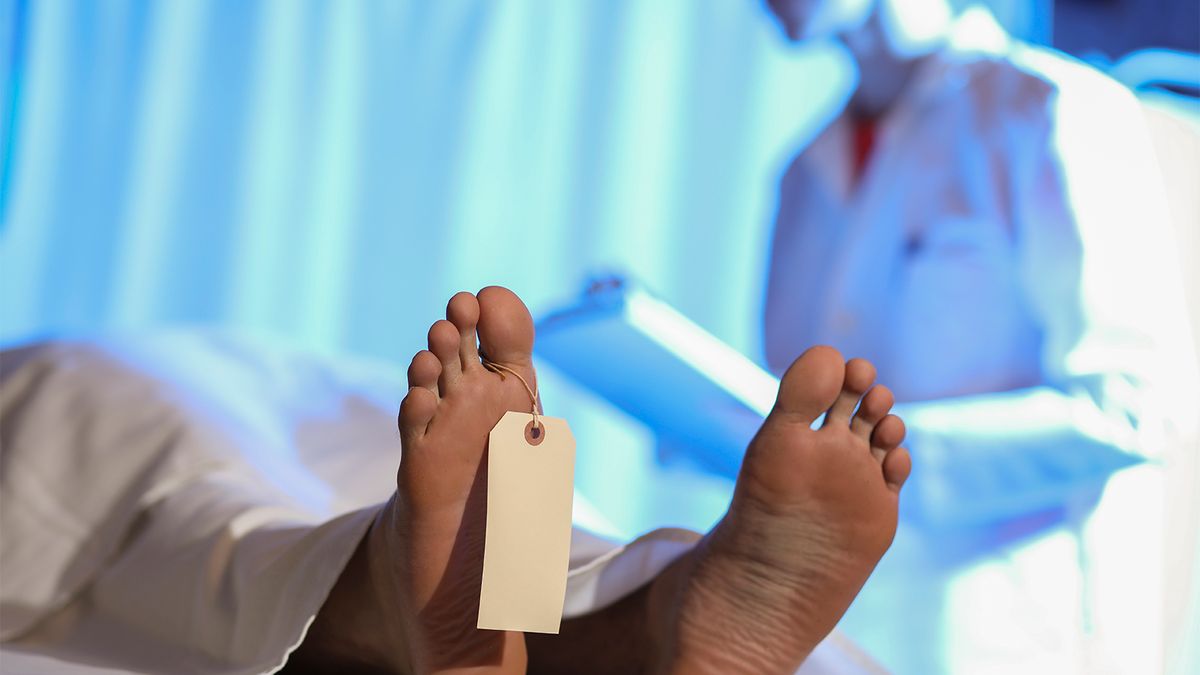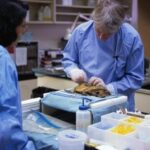The world of autopsy pathology is often shrouded in mystery, a realm glimpsed through crime dramas and whispered narratives. Yet, the reality of this crucial medical specialty extends far beyond the sensationalized portrayals. It is a field of meticulous investigation, scientific rigor, and profound respect for the deceased. Let’s dissect the core components of autopsy pathology, venturing into the unseen and illuminating its essential role in medicine and justice.
I. The Autopsy Suite: A Sanctum of Inquiry
Forget the dimly lit, foreboding chambers of television. The modern autopsy suite is a brightly illuminated, sterile environment. Think of it as a surgical theater dedicated to a different purpose: not to mend, but to meticulously understand. Key elements include:
- The Autopsy Table: Typically stainless steel, with drainage systems to manage fluids and ensure hygiene.
- Instrument Trays: A comprehensive array of specialized tools, from scalpels and saws to rib cutters and tissue forceps. Each instrument is designed for a specific task, ensuring precision and minimizing tissue damage.
- Ventilation System: Crucial for maintaining air quality and protecting personnel from airborne pathogens. Negative pressure systems prevent contaminants from escaping the suite.
- Radiological Equipment: X-ray machines and CT scanners are increasingly used to identify fractures, foreign objects, or other internal abnormalities before the physical examination begins. This provides a “roadmap” for the subsequent dissection.
- Photography and Documentation: Meticulous record-keeping is paramount. Photographs, diagrams, and detailed notes are taken throughout the process to document findings accurately.
The environment itself reflects the seriousness and precision demanded by the discipline.
II. The Prosectors: Architects of Discovery
At the heart of the autopsy lies the prosector, the pathologist who conducts the examination. These are highly trained medical doctors, specialists in the art and science of post-mortem investigation. Their responsibilities are multifaceted:
- Case Review: Before commencing the autopsy, the prosector meticulously reviews the deceased’s medical history, police reports (if applicable), and any other relevant information. This contextual understanding guides the examination.
- External Examination: A thorough assessment of the body’s exterior, noting any scars, tattoos, injuries, or other distinguishing features. This step can reveal clues about the cause and manner of death.
- Internal Examination: The systematic dissection of the body, organ by organ. The prosector examines each organ for abnormalities in size, shape, color, and texture. Tissue samples are collected for microscopic examination.
- Toxicology and Other Ancillary Tests: Blood, urine, and other bodily fluids are often sent to a toxicology laboratory to detect the presence of drugs or poisons. Other tests, such as genetic analysis or microbiological cultures, may be performed as needed.
- Report Writing: The culmination of the autopsy is the comprehensive autopsy report, which details all findings and provides an opinion on the cause and manner of death. This report is a critical document for legal, medical, and public health purposes.
Prosectors are, in essence, medical detectives, piecing together the puzzle of death with scientific precision and clinical acumen.
III. The Dissection: A Symphony of Precision
The internal examination, or dissection, is a highly structured process. Several techniques exist, each with its advantages. Common approaches include:
- The Virchow Method: Organs are removed one at a time and examined individually.
- The Rokitansky Method: Organs are dissected in situ, meaning within the body, before removal.
- The Ghon Method: Organs are removed en bloc, meaning as a single unit, and then dissected.
Regardless of the technique, the dissection follows a systematic pattern. The prosector begins with the head, examining the brain and skull. Next, the neck organs are inspected, followed by the chest and abdomen. Each organ is weighed, measured, and meticulously examined for any abnormalities. Representative tissue samples are taken from each organ and preserved in formalin for microscopic analysis.
Special attention is paid to any injuries or abnormalities identified during the external examination or radiological studies. These areas are carefully dissected to determine the extent and nature of the damage.
IV. Microscopic Analysis: Unveiling the Invisible
Macroscopic examination with the naked eye is crucial, but the true power of autopsy pathology lies in microscopic analysis. Tissue samples collected during the dissection are processed, sectioned, and stained to allow for detailed examination under a microscope.
This microscopic examination can reveal a wealth of information, including:
- Infections: Identifying the presence of bacteria, viruses, fungi, or parasites.
- Inflammation: Detecting signs of inflammation in tissues, which can indicate an underlying disease process.
- Neoplasia (Cancer): Identifying cancerous cells and determining the type and extent of the tumor.
- Ischemia: Recognizing signs of tissue damage due to lack of blood flow, such as in heart attacks or strokes.
- Toxic Effects: Identifying characteristic tissue changes caused by drugs or poisons.
Microscopic analysis provides a level of detail that is impossible to obtain with the naked eye, allowing pathologists to uncover subtle but significant clues about the cause of death.
V. The Broader Impact: Beyond the Individual Case
Autopsy pathology extends far beyond the individual case, contributing significantly to public health, medical knowledge, and the pursuit of justice. The information gleaned from autopsies can:
- Identify Emerging Infectious Diseases: Autopsies can be crucial in detecting outbreaks of new or re-emerging infectious diseases, allowing public health officials to take swift action to contain the spread.
- Monitor the Prevalence of Diseases: Autopsy data can provide valuable insights into the prevalence of various diseases in the population, helping to inform public health policies and resource allocation.
- Evaluate the Effectiveness of Medical Treatments: Autopsies can be used to assess the effectiveness of medical treatments and identify potential adverse effects.
- Advance Medical Research: Tissue samples collected during autopsies can be used for medical research, leading to a better understanding of disease processes and the development of new treatments.
- Provide Evidence in Criminal Investigations: Autopsies play a critical role in criminal investigations, providing evidence that can be used to identify perpetrators and bring them to justice.
The dedication and expertise of autopsy pathologists contribute immeasurably to our understanding of life and death, impacting not only individual cases but also the health and well-being of society as a whole. It’s a specialty that demands precision, critical thinking, and a profound respect for the human body, revealing truths that might otherwise remain hidden.










Leave a Comment